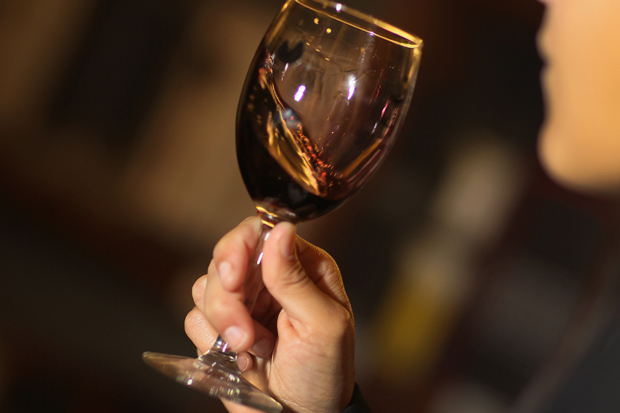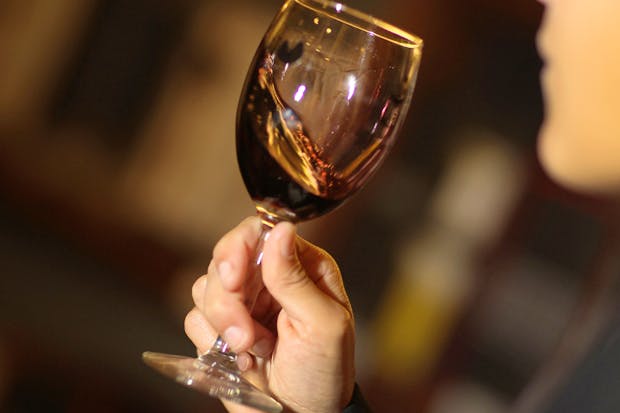Some people carry a terrible burden: they have an indubitable duty to drink wine. Through family, profession and the overarching greater good, they must grow grapes, make wine and travel the world opening the bottles. Two such heroes are Jon Hesketh and Phil Lehmann. Their fathers worked together in the late ‘70s (Robert Hesketh and Peter Lehmann – you might have heard of them…), saving grape growers and ancient vineyards from cancelled corporate contracts and government vine-pull schemes. Jon and Phil have of late finally found the family stars once again aligned. Via various jobs with Yalumba, Wirra Wirra, Teusner, and Lion Nathan their mutually compatible skills (Jon’s marketing and Phil’s making) have found a happy home at St John’s Road, in the Barossa, bringing an astuteness and elegance to everything they do. They’re generous types, too: this offer has 20 per cent off and free freight. Vinum Vitae.
St John’s Road PL Chardonnay 2015, $24, down from $30.
‘Wild yeast. Reversed ferment’, adds the label of this super-deluxe yet elegant chardonnay – and the fact the vines are in the groovy Eden Valley. Wild yeast is nowadays as loved as it is understood. You don’t use a packet yeast, but Nature’s own microflora. It makes wine with more than je ne sais quoi; indeed, think of the difference between homemade sourdough bread and shop stuff. Reversed ferment is a trickier proposition, however, particularly for my muddled mind. What it means is that 60 per cent of the wine goes through malolactic fermentation before the alcohol fermentation. It’s usually the other way around. The advantage of the reversed method? Structure is firmly framed, with the texture and richness normally associated with malolactic fermentation more understated. I can’t understand – nor can Phil Lehmann – why more winemakers don’t try it. Oh, and this wine’s so assured that it wants a roasted poussin or a tiny two-point rack of pork for luncheon. I found Tuesday luncheon best, as I like to live it up a bit at the end of my working week.
St John’s Road Motley Bunch Grenache Mataro Shiraz 2014, $17.60, down from $22.
Spicy, punchy, lively and pert. Fresh plums jump out, pink peppercorns are kaleidoscopic. It is a long and dry red wine that is equally a creature of the Barossa’s vineyards as it is an homage to the Rhone and the grenache, syrah, mourvèdre blends that proliferate there. Mourvèdre is called mataro here, or monastrell in Spain, btw. I know, it’s cray-cray, but, like, whatevs, as my EA, Fleur, says. There’s no oak interference in this wine, just cheerful fruit. Black beans cooked with smoked paprika and barbecued sausage.
St John’s Road Workhorse Shiraz Cabernet 2014, $17.60, down from $22.
Here’s a wonderful example of an Australian classic blend, unique to our winemaking shores. Imagine the French blending a Rhone with a Bordeaux? Not on your nelly. But we can. Shiraz and cabernet sauvignon. Separately, individually, they may have been high quality single varietal wines in their own right; but together, well, ‘the whole is more than the sum of its parts’, as Aristotle concluded when sorting out Holism in his Metaphysics. Speaking of Greeks, with cabernet’s structure and dryness and shiraz’s plushness and generosity, drink this with simple lamb chops, deftly using rosemary, lemon and salt. Save the garlic for the yoghurt dip that accompanies it all.
St John’s Road Block 8 Shiraz 2015, $30.40, down from $38.
Deep, dense, lifted. The colour of the lining of Dracula’s cape – his formal dining one, not hunting. Hints of nutmeg and spice; and that damson plum the Barossa throws. The texture is chewy, and some choc-mint lurks. And at 13.4 per cent alcohol, it’s a health tonic more than a red wine. If you love rich, expressive shiraz, you’ll love this; or if you’ve lost your love of Barossa shiraz because of all the high alcohol and fruit-bomb wines, this will rekindle the happy feeling. Cellar it confidently or double decant before drinking now. Chinese beef or duck suit it well, which I choose to eat in an oriental restaurant, as I do those dishes such a disservice by trying to cook them at home.
The post Spectator Australia Wine Club September appeared first on The Spectator.
Got something to add? Join the discussion and comment below.
Get 10 issues for just $10
Subscribe to The Spectator Australia today for the next 10 magazine issues, plus full online access, for just $10.
You might disagree with half of it, but you’ll enjoy reading all of it. Try your first month for free, then just $2 a week for the remainder of your first year.











Comments
Don't miss out
Join the conversation with other Spectator Australia readers. Subscribe to leave a comment.
SUBSCRIBEAlready a subscriber? Log in